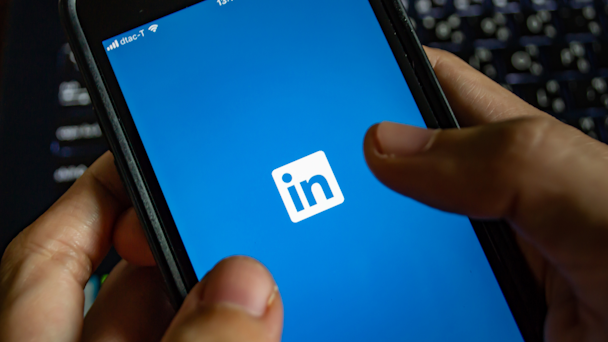Luxury consumer brand advertising on LinkedIn growing: ‘much larger than expected’
LinkedIn now derives up to 15% of its ad sales from the likes of Mercedes-Benz, Cartier, Louis Vuitton and other consumer brands. Here’s why this platform, known primarily for job searches and business marketing, has become a darling among luxury advertisers.

Linkedin is now a great place to shop for both careers and Cartier.
It wasn’t surprising that LinkedIn surpassed $1 billion in ad revenue earlier this year. The Microsoft-owned platform is reaping the benefits of “the big reshuffle” happening in the talent marketplace. It is also the recipient of business marketing dollars that would have been allocated to non-digital channels like live events or airport ads.
What is surprising is the growing presence of luxury brands investing lots of money and time on the platform. Audi, Cartier, Kate Spade, Louis Vuitton and Mercedes-Benz are just a handful of high-consideration consumer brands now engaging with LinkedIn’s 774-million users.
The allure? “LinkedIn members are high-income earners, with the highest median household income of any platform’s user base,” says Ann Lundberg, senior director, strategic accounts, LinkedIn Marketing Solutions. Lundeberg was brought on two years ago to build a team aimed attracting aspirational consumer brands.
Today, consumer brands now account for approximately 15% of ad dollars spent on LinkedIn, per the company. Luxury – including automotive, fashion, finance, technology and travel – is leading the way, says Penry Price, vice president of marketing solutions at LinkedIn. “This is becoming a category that feels like it could become much larger than we expected.”
The murky return-to-work scenario is only helping accelerate the trend. eMarketer forecasted that LinkedIn will grow more than 26% to $2.6 billion in the US this year. However, given that LinkedIn’s Marketing Solutions ad sales division was up 100% in Q2, eMarketer is currently revising the platform’s ad revenue estimates to be much higher. “Less business in person means more business online. That favors LinkedIn,” says Peter Vahle, senior forecasting analyst at eMarketer.
Brands woke up to the fact that “you’re living your work life and home life together,” says Price. “We’re seeing a lot more engagement and interest from brands who are saying ‘wait a second these are people with fantastic jobs and purchasing power.’”
Shopping for both careers and Cartier
Amid a backdrop of people updating their profiles and networking with recruiters was Tom Hardy and Stella McCartney fronting an event promoting Audi’s E-Tron sport utility vehicle. More than 100,000 people tuned in.
Then there’s Louis Vuitton lauding its limited-edition Capucines bag to its 1.6 million followers and Mercedes-Benz promoting its high performance Mercedes-AMG EQS.
It all fits together, says Lundberg. “Many marketers agree that we’re drawing an unnecessary line between B2B and B2C objectives — on LinkedIn they can reach highly engaged professionals with real purchasing power and influence in a community at the intersection of work and life.”
According to LinkedIn’s 2021 Audience Research & Segmentation Study, which was conducted by Interpret, respondents who visited LinkedIn had 14% higher purchase intent for high-consideration goods compared to other social platforms. They also said they planned to spend 22% more on those goods in the next year.
For luxury brands there are also benefits that come from being on a platform birthed in business. Namely, the tools that have been built to sell business-to-business (B2B) products and services translate well for high consideration business-to-consumer (B2C) products which have longer sales cycles, says Price. “These are the types of things those brands appreciate because it’s part of their normal sales cycle. It’s not like buying a pair of sneakers.”
Familiarity also helps, says eMarketer’s Vahle. “LinkedIn has great tools for targeting and attribution. [Plus], they have similar features to Facebook and Instagram when it comes to the news feed and display ads so people are more comfortable using it.” At the same time luxury goods companies, won’t bat an eyelash at LinkedIn’s higher ad rates. “They can justify the spend,” he says.
And then there are privacy and ad-serving concerns which LinkedIn has, for the most part, steered clear of. “We keep the platform as clean as possible so people can trust it,” says Price.
With 130 new members signing up per minute, Lundberg only expects to see LinkedIn ad sales continue to surge. “Our strategy for 2022 is consistent across B2B and B2C – help marketers connect with customers in a context and a mindset where they are receptive, that is brand enhancing, and that drives business outcomes.”

